Homemade Ravioli with Four Cheese Filling
Homemade ravioli is way better than store-bought and can be filled any way your like. Our favorite is this tasty four cheese filling!
Servings: 6 servings
Calories: 523kcal
Equipment
- pasta maker (optional)
- Kitchen Scale (optional)
- Rolling Pin
- Ravioli Presses
Ingredients
Cheese Filling
- 2 cups ricotta (We like Galbani brand)
- 1 cup fontina (or gruyere, havarti, or provolone), shredded
- 1/2 cup mozzarella cheese (shredded or finely chopped)
- 1/2 cup parmigiano reggiano (freshly grated)
- 1 large egg (lightly beaten)
- 1/4 teaspoon nutmeg
- sea salt and fresh black pepper (to taste)
Instructions
- Combine cheese filling ingredients in a medium-sized mixing bowl and mix until well combined. Cover and refrigerate until ready to use.
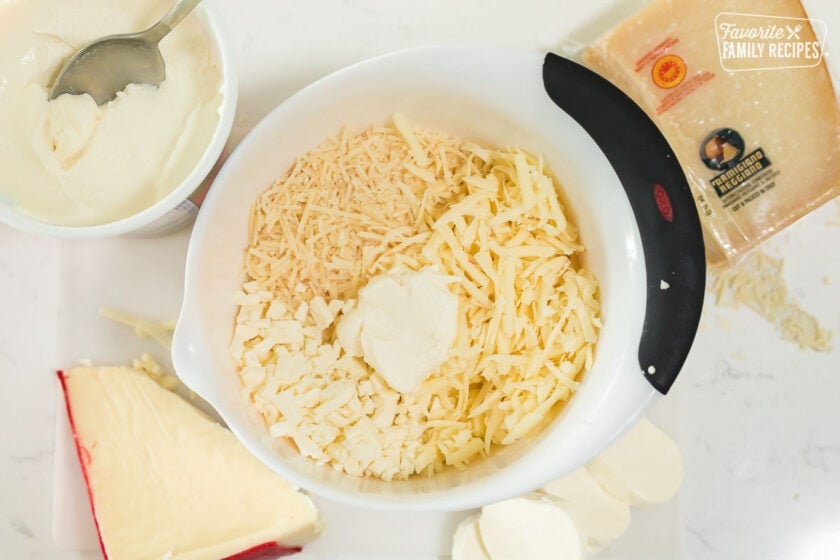
- On a clean surface, place flour in a mound and use hands to form a well in the middle. Crack eggs into a bowl and then pour the eggs into the middle of the well. Add a small drizzle of olive oil to the middle if desired.
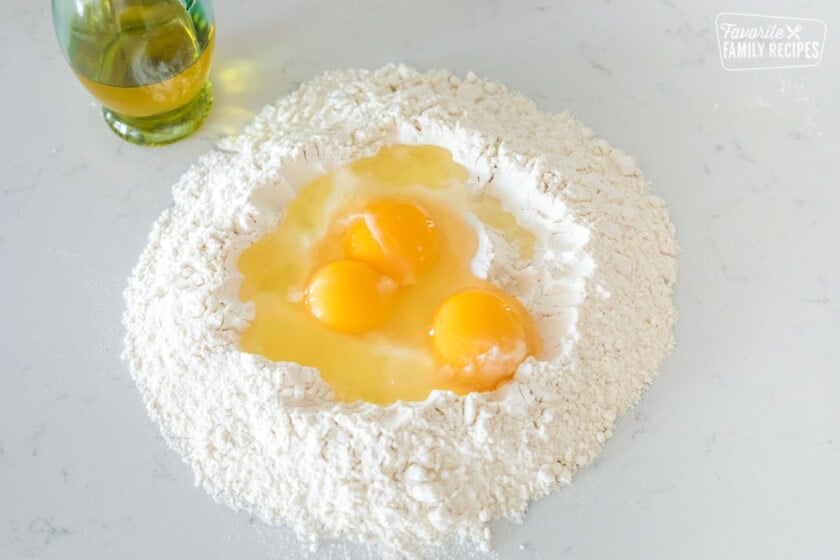
- Beat the eggs with a fork while adding a little bit of the flour from the sides at a time until all the flour is incorporated into the egg and the mixture becomes somewhat dry and crumbly.
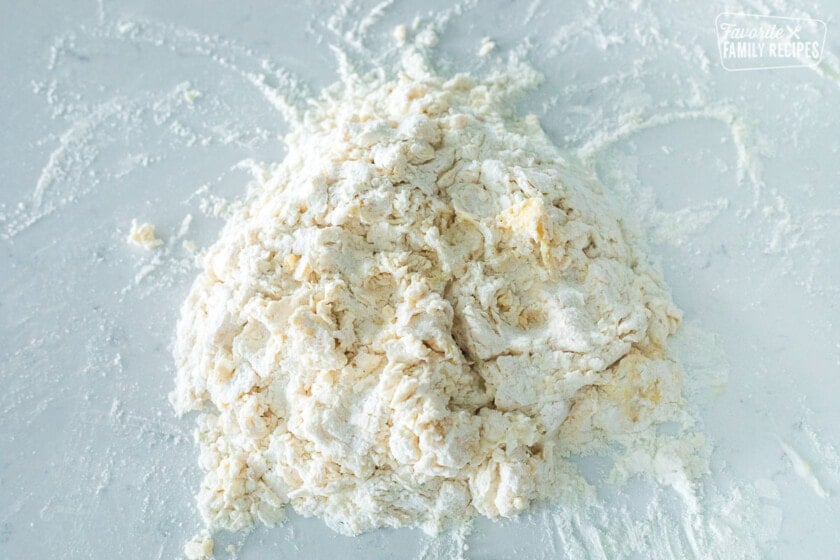
- Use hands to knead the dough for 10 minutes. If the dough it too dry, wet your hands with water and continue to knead. Don't add water directly to the dough because it won't incorporate as well. If the dough is too wet and sticky, add a sprinkle of flour. After kneading for 10 minutes, there should be no more visible flour on the dough and it should have a smooth, soft, yet dense texture. It won't be light and airy like a yeast dough. Place the dough in a small bowl and cover with plastic wrap. Allow to rest for 20-30 minutes. Use a bench scraper or knife to cut the dough into 4 equal pieces. Work with one piece at a time and place the pieces that aren't being used back in the bowl and cover with plastic wrap. This will keep the other pieces from drying out.
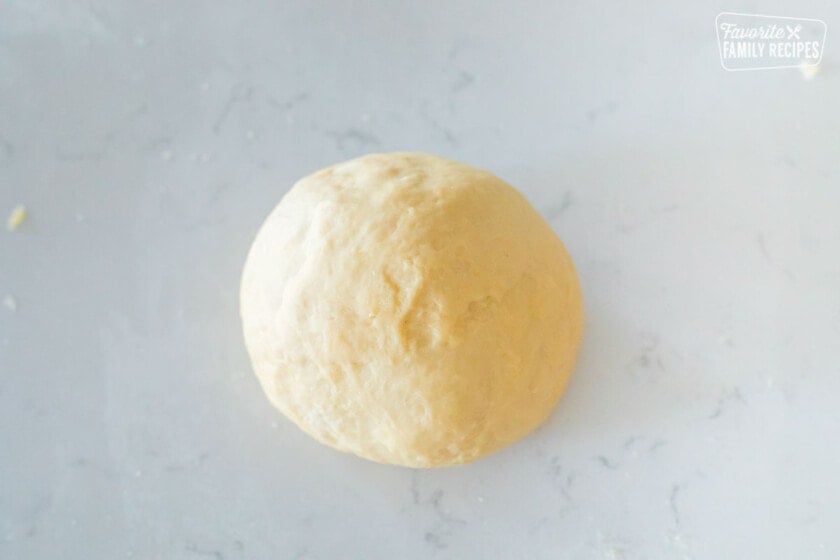
- Using your hands, flatten out one piece of dough into an oval shape. Using your pasta maker's widest setting (for my pasta roller, the widest setting is a "1", other rollers might have this flip-flopped with their widest setting as the highest number), feed the dough through 2-3 times.

- Repeat feeding the dough through, increasing the level each time. Level 2, 3, etc... until you feed it through at your pasta maker's 2-3rd narrowest level (for a Kitchen Air roller, this is a 6 or 7). If you find the pasta starts to stick, sprinkle some more flour over the pasta and/or onto the feeder of the pasta machine. Dust a clean surface with flour and lay your large, flat, rolled pasta over the top.
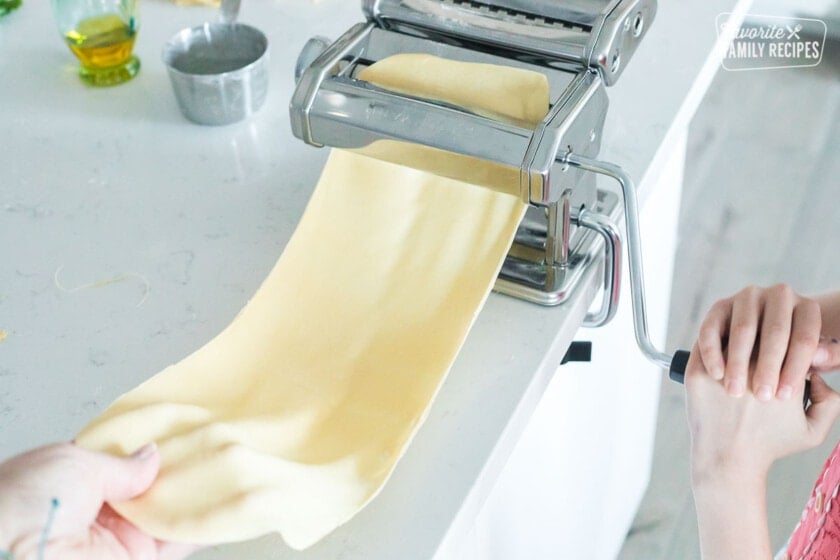
- Place dollops of filling along the pasta sheet in two rows (see picture). Until you get familiar with spacing, you can gently press the pasta sheet with the ravioli stamp to give you an outline/ guide on where to place the dollop of filling. Make sure to use enough filling to fill the ravioli pocket completely (I like to use a cookie scoop to get even amounts).
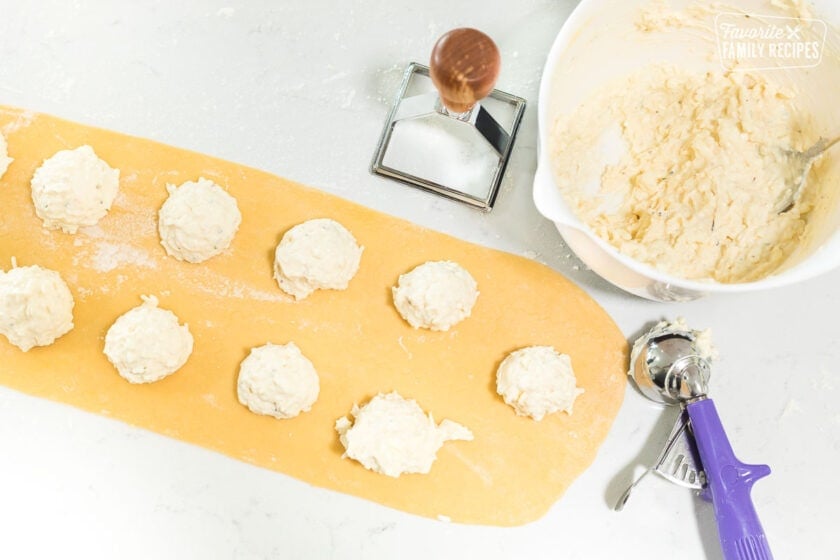
- Lay another pasta sheet over the top of the sheet with the filling and press around the filling with your fingers to get any air pockets out. Press the stamp firmly over each pocket of filling to create the ravioli. You can also press the seams firmly with your fingers and use a pasta wheel to cut into squares.Place finished ravioli on a parchment-lined baking sheet and cover with plastic wrap or a lightly damp kitchen towel.
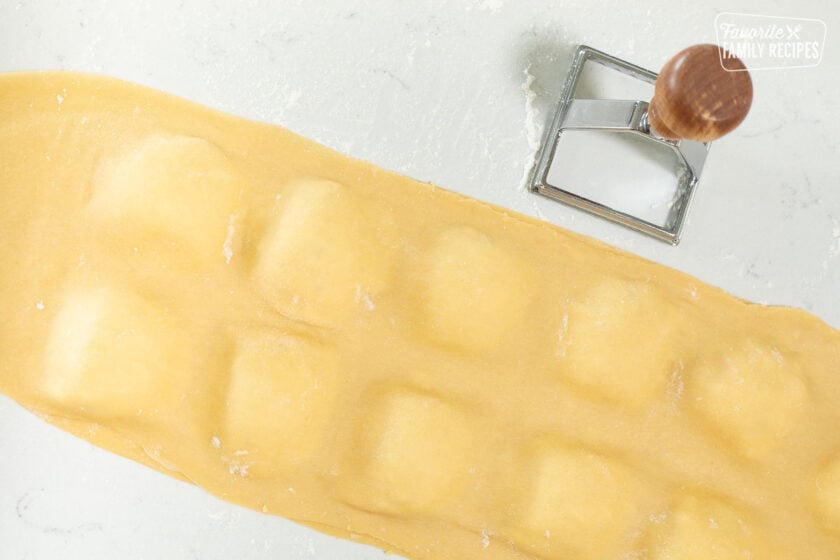
- Bring a large pot of salted water to a boil. Place a few ravioli in the water to gauge the amount of time it will take to cook the rest of the batch. It should take between 3-5 minutes depending on the thickness of your pasta. Once you are familiar with the exact time it will take until done. Cook the rest of the ravioli in 2-3 batches (you don't want to overload the pot).
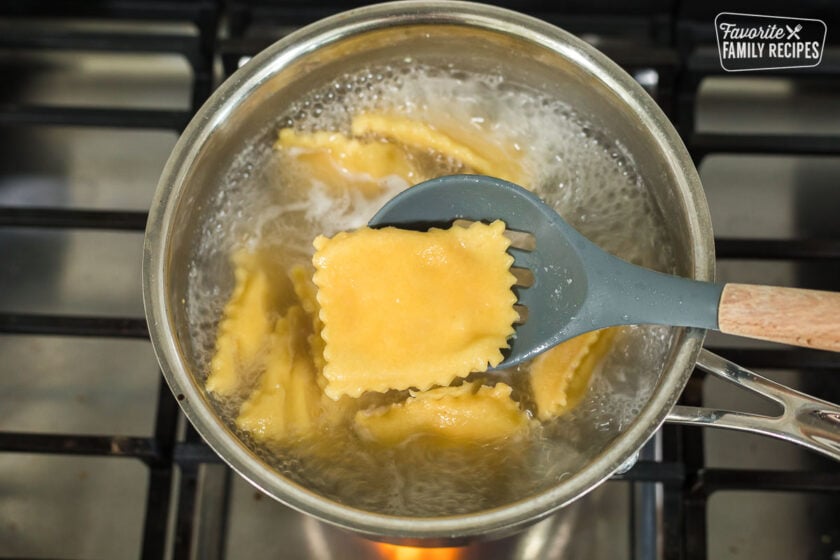
- Remove the ravioli from the water with a slotted spoon and place on individual plates or in a family-style serving dish. Serve immediately with your favorite pasta sauce.
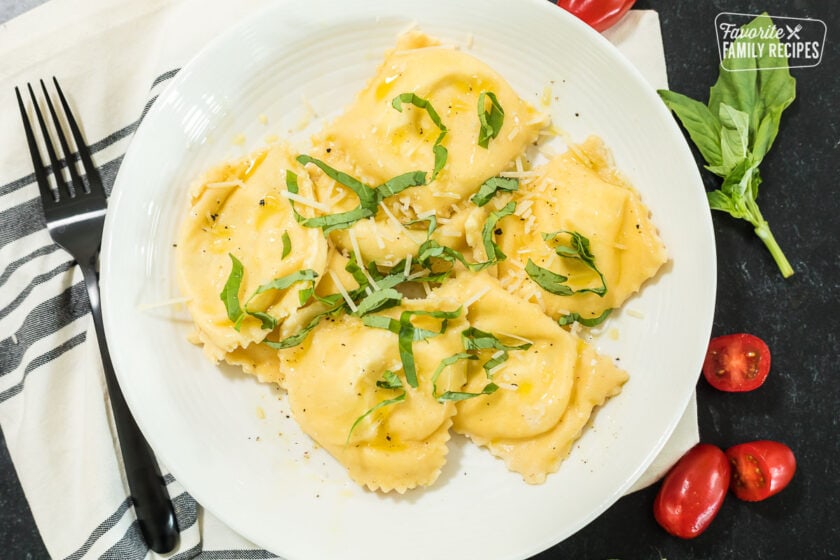
Nutrition
Calories: 523kcal | Carbohydrates: 42g | Protein: 30g | Fat: 26g | Saturated Fat: 15g | Polyunsaturated Fat: 2g | Monounsaturated Fat: 8g | Trans Fat: 0.01g | Cholesterol: 216mg | Sodium: 490mg | Potassium: 219mg | Fiber: 1g | Sugar: 1g | Vitamin A: 890IU | Vitamin C: 0.002mg | Calcium: 465mg | Iron: 3mg
